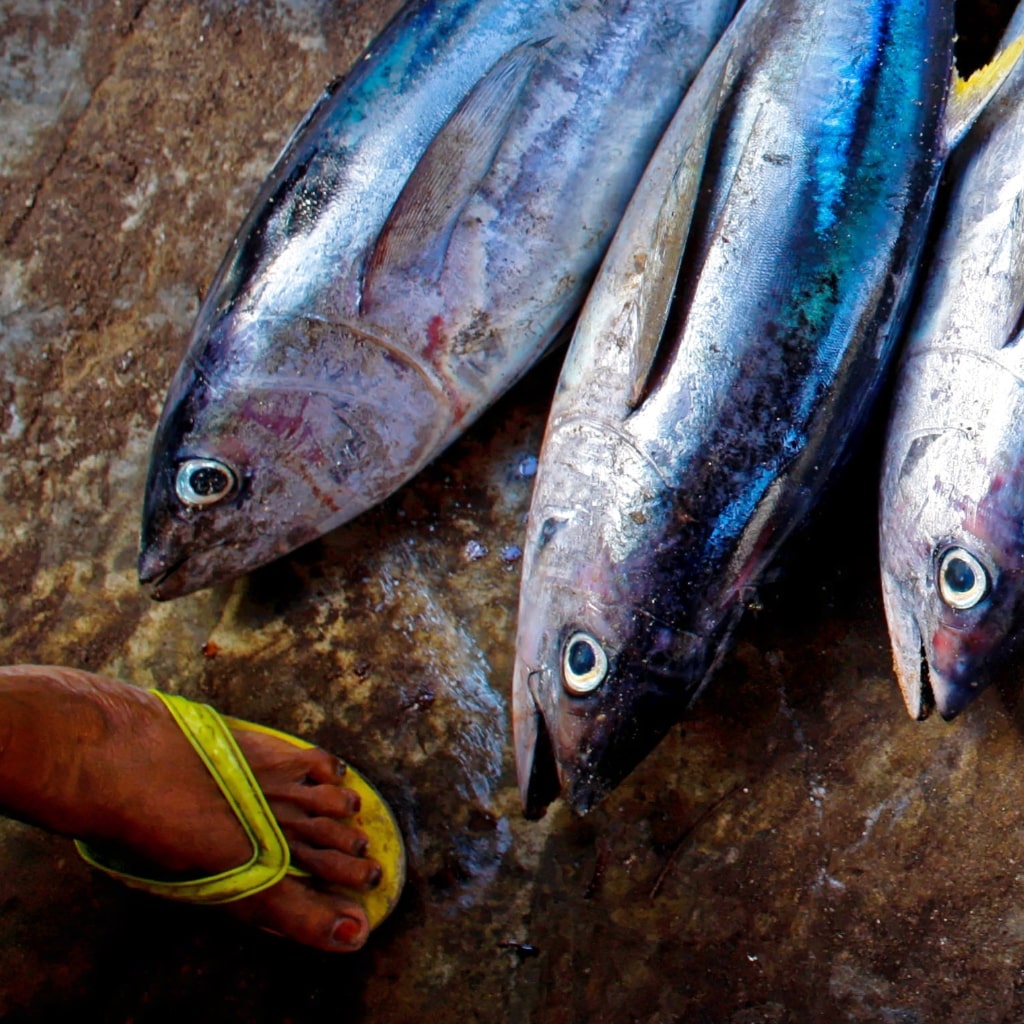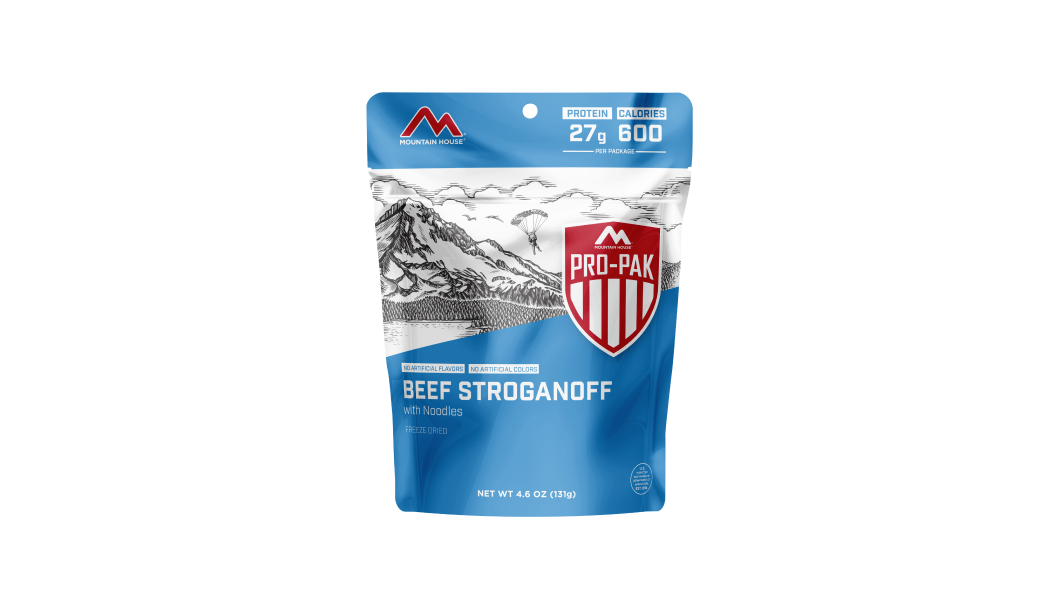Inspired for an Adventure? Check out Beef Stroganoff - Pouch and Beef Stew - Pouch
Free Ground Shipping On All Orders
Over 2,100 Reviews
Add description, images, menus and links to your mega menu
A column with no settings can be used as a spacer
Link to your collections, sales and even external links
Add up to five columns
Add description, images, menus and links to your mega menu
A column with no settings can be used as a spacer
Link to your collections, sales and even external links
Add up to five columns


One of the joys of angling is the reward of cooking up your own catch. Even if you prefer catch-and-release—or don’t fish at all—knowing how to properly clean a fish is an excellent skill to learn if you’re interested in cooking the very freshest fish possible, in which case you’ll often be buying a whole fish from a fishmonger (or right off the boat).
Cleaning a fish quickly and thoroughly ensures the best-tasting end result and avoids contaminating the flesh. Removing guts, gills, blood, and scales prevents distasteful flavors and lessens the chance of spoilage.
Before you start cooking, it’s important to know how to properly prepare your fish. The cleaning process can vary depending on the type and size of your catch, and we’ll touch on a few of those differences below. For now, consider this a simple, step-by-step introduction to cleaning fish.
How Long Does a Fresh Catch Stay Good?
The sooner you can thoroughly clean a freshly caught fish, the better it will taste. The best way to keep fish fresh after catching is to bleed them out after humanely killing/stunning them. A bled-out fish can be stored on ice in an insulated, draining cooler or refrigerator for 24 hours or more. You can freeze a gutted fish, but expect some loss of flavor and texture over time.
Ungutted fish won’t keep as long as gutted fish, on account of the bacteria within the organs. A whole, ungutted fish is best cleaned and cooked within a few hours of being caught. Warm temperatures speed up spoilage, so always prioritize quick cleaning.
What Do You Need To Clean A Fish?
Before you get started, make sure you have the right gear for the job. This list of basic tools and a truly fresh fish will make cleaning easier, faster, and a lot less messy.
- Fresh Fish: Obviously! If you’re acquiring the fish from somebody else, assess its freshness by smelling it (if there’s too much of a “fishy” odor, it’s not fresh), checking for sliminess, and confirming bright red gills and clear eyes.
- Clean Station & Clean Cutting Board: Clean and sanitize your work surface with a bleach solution before prepping your fish, whether you’re working on deck, at a designated fish-cleaning table, on a picnic table, or in a home kitchen. (Also, make sure any temporary storage vessel for your fish, such as a cooler, is thoroughly cleaned and sanitized.)
- Newspaper: If working outdoors, have multiple pages of newspaper (or plastic sheeting or other analogous material) to keep your workspace as clean as possible and easily wrap up discarded bits.
- Descaling Tools: A spoon or knife (dull-bladed or with a blunt bridge) works well for descaling, though you can also acquire a specialized scaling tool (a scaler) for the purpose.
- Sharp Knives: You’ll need a good, sharp fillet knife for cutting away unwanted parts and gutting your fish. (Kitchen shears also come in handy for snipping away fins or cutting bones.) If you’re working on a fair number of fish, have a knife sharpener handy, too.
- Gloves: Some prefer wearing gloves when gutting and otherwise cleaning a fish. Protective fish-cleaning gloves are a good idea when handling species with sharp fins, spines, or scales.
- Clean Running Water: You want clean running water on hand to wash off scales, blood, and other material and to clean out a fish’s body cavity.
- Container for Guts, Fins, etc.: You need a container, bucket, bag, or trash receptacle to properly dispose of viscera, scales, fins, heads (if discarding), and other waste material.
7 Steps to Cleaning a Fish
The following steps provide the basic foundation for cleaning and gutting freshwater and saltwater fish, whether on a boat, at the dock, or back home.
Step 1: Bleed the Fish
Bleeding out your fish after catching it ensures better flavor. Most importantly, humanely stun or kill the fish directly after removing it from the water by delivering a strong blow to the head above the eyes or using the spiking method to penetrate the brain.
Cut the gills to allow the fish to bleed out. Placing the fish in water will facilitate easier blood flow.
Step 2: Prepare a Cleaning Station

Clean and sanitize your work surface, whatever it may be, and clean your tools. Lay out a few layers of newspaper atop your cutting board or tabletop. Have your source of clean water and your bucket, bag, or other disposal container near at hand.
Step 3: Remove Fish Scales & Rinse

Depending on the kind of fish and your cooking plans, it may not be necessary to descale your fish. However, it’s often the best way to go (not least because descaling can make handling and cutting into the fish easier).
How do you descale a fish? Pretty easy-peasy:
- Run the back of a knife (or a dull blade), a spoon, or a scaler from the tail toward the head
- Repeat as necessary to get as many scales off as you can
- Turn the fish over and repeat the process on the other side
- Wrap up the scraped-off scales in your top layer of newspaper, and rinse off the fish (and your hands and tools).
Step 4: Remove the Entrails
Beginners may balk at learning how to gut a fish, but it’s actually an easier and quicker task than you might think.
Turn the fish belly up and insert your sharp knife into the anal vent. Draw the blade toward the head with a shallow incision, taking care not to cut too deeply and thereby risk puncturing the intestines. Stop your cut around the jawline.

With some smaller fish, such as trout, you can often then run your knife through the slits along the sides of the lower jaw, then cut through toward the front of the fish. Then grab the jaw in one hand and the flap you’ve made near the gills and pull the latter down toward the tail in a swift motion, which should extract most of the entrails as well as the gills in one fell swoop.
Otherwise, after making the vent-to-jawline cut, simply open the fish up and pull or scoop out all of the guts. Make sure to scrape out the kidney and bloodline running along the backbone.
Step 5: Trim/Remove the Fins (and, Perhaps, the Head)
Cut off or trim the dorsal and other fins. You may or may not want to remove the fish’s head, which can be done by cutting through right behind the gills or the pectoral fins at 45-degree angles on either side.
With some fish—trout, for example—you’ll usually leave the head on for the cooking process. If so, cut out the gills (if you didn’t already remove them via the gutting process).
Step 6: Rinse & Pat Dry

Rinse off the fish with cold running water, inside and out, to remove remaining blood, entrail bits, and remaining scales. You shouldn’t need excessive amounts of water to get the abdominal cavity to run off clear. Then pat the fish dry with a paper towel.
Step 7: Cook & Enjoy
You might be cooking that beautiful, fresh fish of yours whole, as in butterflied, pan-fried trout. Or you may want to prepare fillets (also remarkably easy to do once you get the hang of it) or, in the case of a larger, meatier fish, carve out steaks. You may or may not be skinning your fillets or steaks.

Regardless, there’s certainly a whole galaxy of methods for cooking delicious, couldn’t-be-fresher fish. There’s not much better than a fresh catch cooked over a campfire—or, as you can learn more about in this ingenious hack, in one of our Mountain House pouches, no fire required!
A Couple of Tips on Cleaning a Flatfish
The above steps describe the cleaning process for your average roundfish. If you’re dealing with a fresh-caught flounder, sole, halibut, or other flatfish, gutting is done a little differently. The bulk of a flatfish’s entrails will be behind and near the gills, removable by cutting a relatively short slit in the slightly bulged body cavity and then pulling out the innards, or simply cutting out that cavity in a chunk by slicing around it from the gills.
You can certainly scale your flatfish, though if you plan on skinning the filets, you don’t necessarily need to.
Common Mistakes To Avoid
While cleaning fish is relatively straightforward, there are a couple of common mistakes that you’ll want to avoid.
- Using a dull knife: A sharp fillet knife makes cleaner cuts and helps prevent slipping or tearing the meat.
- Waiting too long to clean your catch: Bacteria can build up fast, softening the flesh and affecting flavor. Clean your fish as soon as possible after catching it.
- Skipping the rinse: Always rinse your fish in cold, clean water to remove blood, scales, and debris before cooking or freezing.
- Cutting too deep: Be gentle when slicing to avoid puncturing the intestines or trimming away good meat.
- Forgetting the pin bones: Run your fingers along each fillet and pull out any small bones with tweezers for a smoother eating experience.
Cleaning Fish: Part of the Angler’s (and Chef’s) Essential Skillset
Mastering the art of cleaning fish is quick and easy once you get the hang of it, and it’s an essential part of every angler’s toolkit. Whether you’re casting into one of the legendary trout streams in America or cooking your latest catch at home, knowing how to clean and prepare fish ensures every meal tastes fresh and rewarding.
And speaking of quick and easy, stock up on Mountain House just-add-water meals for your next fishing trip!

Easy Hunting Camp Meal Ideas to Try

How to Prepare for a Group Hunting Trip: Food, Gear & Camp Essentials


Stay Hungry for Adventure
Sign Up for Delicious Outdoor Meals & Exclusive Offers!
By clicking ‘Join Now’, I agree to the Terms of Service and Privacy Policy.


Join the adventure
©2025 Mountain House — All Rights Reserved.
Your Cart is Empty
Continue ShoppingYour Cart
Subtotal
$0.00
EXPRESS PAYMENT METHODS AVAILABLE IN CHECKOUT
Taxes and Shipping Calculated at Checkout
Your ExpertVoice deal.
$[Deal Price]
$[Original Price]
Discount applied at checkout.
On sale now — lower than your ExpertVoice discount.
Not eligible for ExpertVoice discount.














